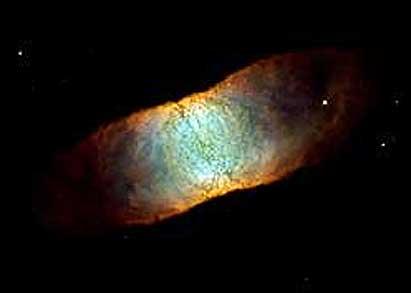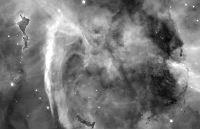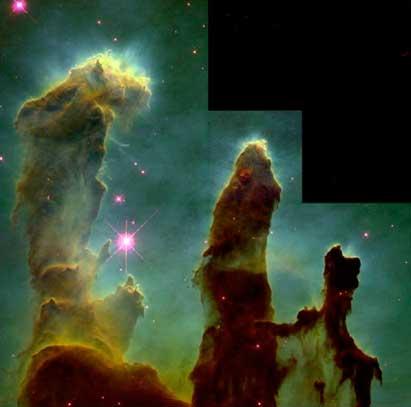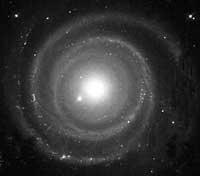Dust of stars in death
2002/07/23 Elhuyar Zientzia

Astronomers
are collecting images of stars being switched off through the Hubble telescope. Dying stars create planetary nebulae formed by gas and dust. Many times they have a symmetrical appearance like the star IC 4406 that appears in the image, in this case with a stain shape that blurs the eye, astronomers have called the star IC 4406 'retina'.
The
colors of the image indicate the nature of the molecules that collect the gas clouds: the light emitted by the oxygen atoms appears in blue, that of the hydrogen atoms in green and that of the nitrogen atoms in red. On the contrary, high-surface neutral gas did not radiate visible light, so it cannot be detected with the Hubble telescope, but with the radio telescope.
According to astronomers, the most interesting structure of the star IC 4406 is the dark tangled strip that crosses the nebula. The width of this strip is about 160 astronomical units (one astronomical unit is the Earth-Sun distance).
The
future of this material knot is not foreseeable. In fact, the nebula is expanding and the material may simply disperse. If it persists after expansion, small black objects can be compacted and formed.

Gai honi buruzko eduki gehiago
Elhuyarrek garatutako teknologia






